My grandfather’s compressor had been running for 10 minutes. I was trying to air up my tires, and it would not stop running and hiss and wouldn’t build up pressure.
He sauntered out of the house and across the lawn to the shop. “ya gotta shut the drain valve. I always drain it on the weekend,” he drawled.
At 10 years old, I was getting a world-class education in pneumatics.
A compressor that runs endlessly can overheat the motor, tripping the thermal switch or worse. It also means that it is not building pressure.
Even a compressor that runs longer than it should be is using more energy than is ideal. In a lifetime, a compressor will use much more energy than the compressor itself cost to purchase (calculated at $.10/kWh)
If your compressor won’t shut off, this is a serious issue that should be addressed before you use it again. Here is the Troubleshooting system to resolve it.
Disclaimer: This article is for information purposes. Compressors can be deadly to work with. This article does not provide enough training to qualify someone to work on a compressor safely.
See Related: Air Compressor Won’t Start

In a hurry? Quick Links:
1. Pressure Relief Valve
This is one of the most common ones I’ve seen. The pressure relief valve is designed to prevent overpressurization that can cause a compressor tank to explode.
Sometimes they call it a pop-off valve.
If the pressure switch malfunctions and the PRV does as well, there is always a chance of explosion. It more likely is that the PRV is going to get stuck open.
They tend to get corroded and to collect dust and grime.
The cool thing about pressure release safety valves is that you can pull them open to release pressure in the tank. This probably only needs to be done in cold weather when you are struggling to get the compressor started.
However, if it has been blown open or pulled open, this little valve maybe now stuck in the open position.
This will prevent the compressor from building air pressure and will cause it to run endlessly.
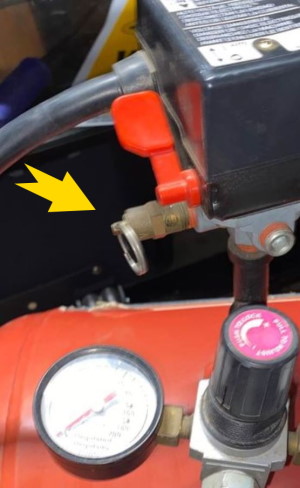
If it keeps popping open when the compressor is running, the pressure switch is bad. As the tank reaches an unsafe pressure level, the PRV safety valve opens.
See Related: Adjusting Air Compressor Pressure Switch
2. Drain Valve
I’ve seen this one happen a dozen times.
The drain valve is on the bottom of the compressor and is designed to release accumulated water from the bottom of the air tank. This reduces the risk of rusting and tank explosion.
Most shops have that one guy who drains the tank religiously. No one else thinks about it.
So then, on Monday, they try to turn the compressor on, and it runs endlessly without building pressure.
This one is pretty easy to find. Just check the big valve on the bottom of the tank.
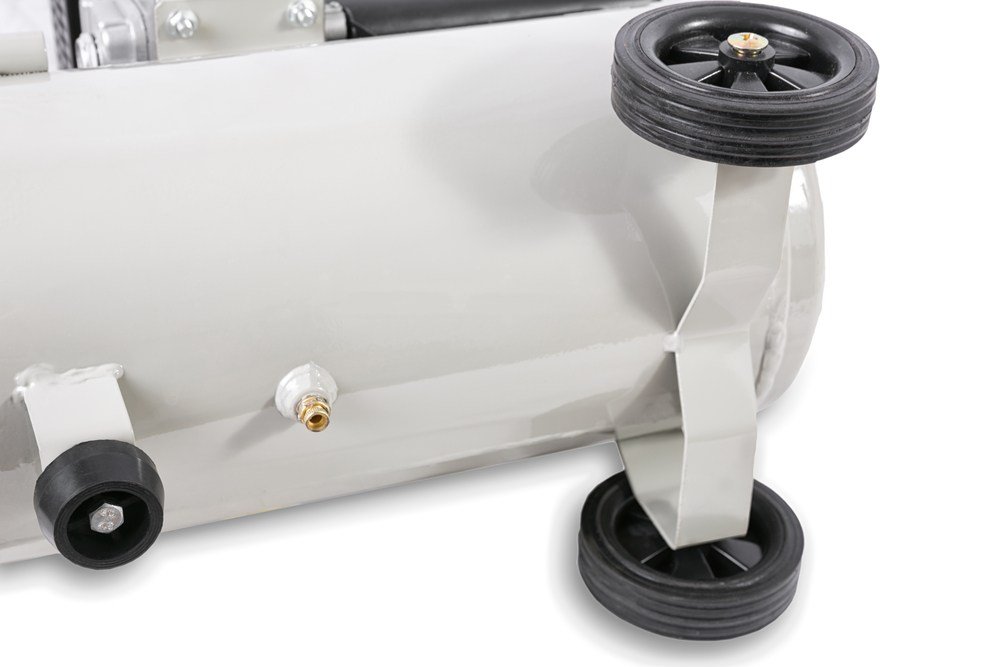
One little curveball, through; large, industrial air tanks sometimes have an automated, electric drain valve that opens electronically at a set schedule. Occasionally, these will fail in the open position.
3. Check Valve
I would say this is almost as common as the other two, especially on small compressors.
Where the compressor feeds into the air tank, there is a large brass connection.
This is a one-way check valve that allows the tank pressure to build and then shuts when the compressor is off to hold the air pressure in the tank.
If the compressor keeps running, check around this valve for leaks. Then, move to the pressure switch (covered in the next section) and check around it.
Sometimes the check valve’s unloader line that runs to the pressure switch will stick open and bleed endlessly out around the pressure switch box. This causes folks to replace the pressure switch (and the included unloader valve) instead of the check valve, which is the real culprit.
Check valves are pretty affordable and easily available online.
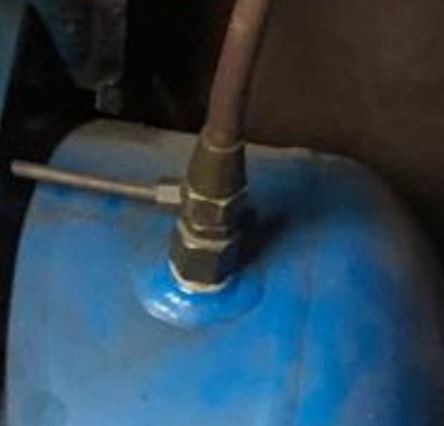
4. Pressure Switch
This section is a little longer.
The pressure switch determines the cut in pressure when the tank pressure drops too low. This pressure setpoint tells the compressor motor to engage (generally around 90 PSI).
Then, when the pressure reaches a proper level — or the cut-out pressure — the pressure switch turns the motor off (Generally around 120 PSI).
This helps protect the mechanical components from excessively high pressure or a tank explosion.
The pressure switch gets its signal from a small line off the check valve to actively measure the tank pressure and maintain a safe range.
Tank Pressure Keeps Building: If the pressure switch is malfunctioning, it can keep the compressor running to an unsafe pressure level. At this point, the pressure relief valve will open, venting the excessive compressor. This means that the compressor can continue to run. However, now you are working off of a ticking time bomb. You’ll want to replace the pressure switch as soon as possible if the PRV is opening.
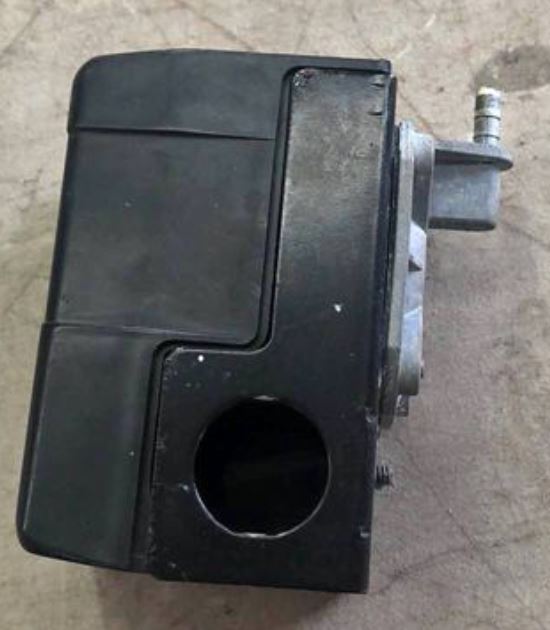
Unsafe Cutout Pressure Setting: If you have installed a new pressure switch, it is possible that it is not adjusted properly or the wrong switch for your tank. You need to make sure you have a proper and safe cut out pressure level. It may need to be adjusted to the proper cut off point.
Tank Can’t Build Pressure: If any of these other items on the list are a problem, the tank will not build pressure. This causes the compressor pressure switch to continue to engage the motor, and the compressor runs as it tries — unsuccessfully — to reach the cutout pressure level.
It may be a pressure switch with a pressure regulator combination that has two gauges on small compressors.
5. Leaking Tool
The tool would have to experience a major leak to cause this. But if you have a leaking hose or an air tool with a bad gasket that keeps leaking, you could create a condition where the compressor has to engage frequently as the pressure keeps dropping.
The biggest risk of this situation is that you will be running the motor more than you should and will exceed the duty cycle of your machine, shortening its life.
Compressor motors do have a thermal overload switch to help mitigate the risks, but you want to repair these leaks as soon as possible to lower your electric bill and protect your equipment.
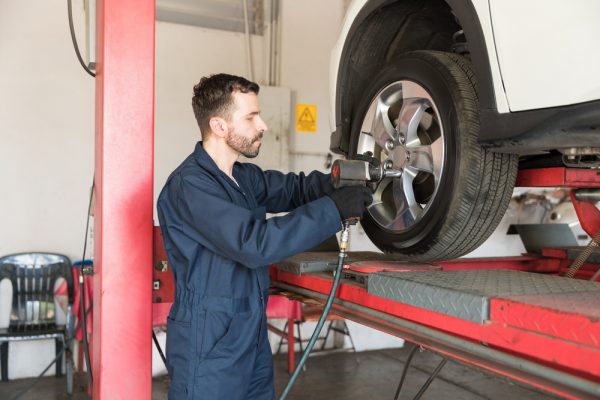
6. Slipped or Broken Belt
Larger compressors will be belt-driven. If the belt is worn, it will slip and not drive the compressor.
You’ll probably catch on to this one pretty quickly since you will hear the motor running, but the compressor won’t be engaging. Or you may smell rubber burning.
Check that the compressor flywheel is turning in line with the motor.
On direct-drive compressors, you might have to disassemble them to check the motor connection. It is less likely for direct-drive compressors to fail in the motor-compressor connection. Also, this is the point where you chuck the old and buy a new one.
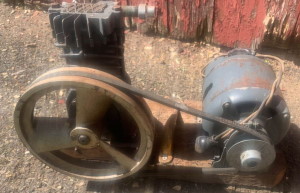
7. Clogged Intake Valve
I have never seen this, personally, but in theory, it could be a problem.
If the air intake filter is clogged, the compressor can’t pull in outside air and won’t build pressure.
If you are checking all of the things, remove and replace the intake valve air filter. It probably has been forever since you cleaned it, anyhow.
That said, if it has been a long time since you replaced the intake filter, it is possible that the foreign debris has lodged in the intake valve and is stopping the compressor from running.
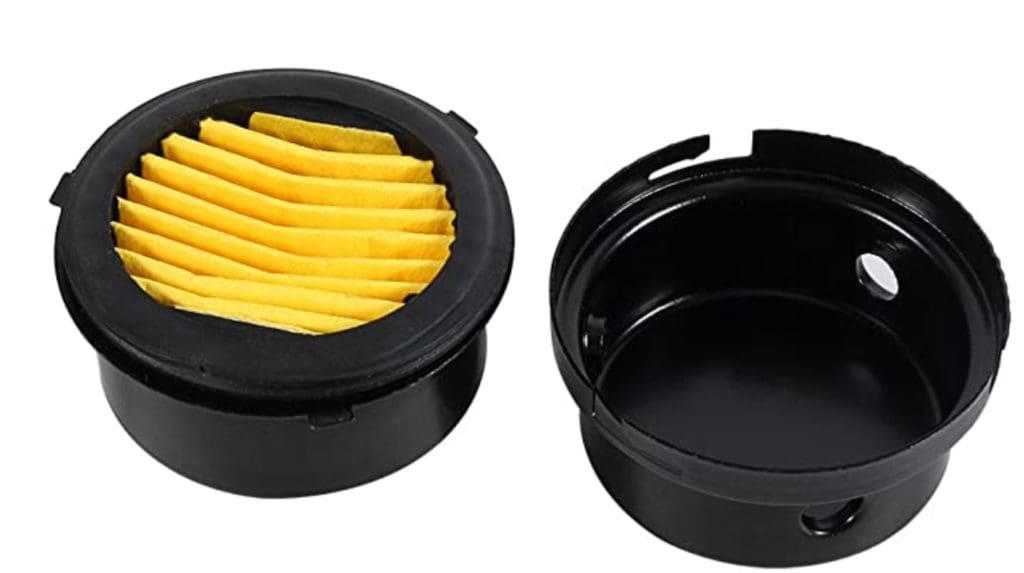
8. Bad Compressor / Worn Out Compressor
Compressors are so resilient. We forget to change their oil, and then we run motor oil in them.
We forget to change their air filters, and we let them bang around in the back of our work truck.
Through this all, they hold up extremely well.
Pancake compressors will generally last for 500 hours, while larger, oil-filled compressors will last 15 years (I have a comparison on these two here).
That said, these things do fail. Here is some of the common compressor problems you can check that might cause a “won’t shut off” condition.
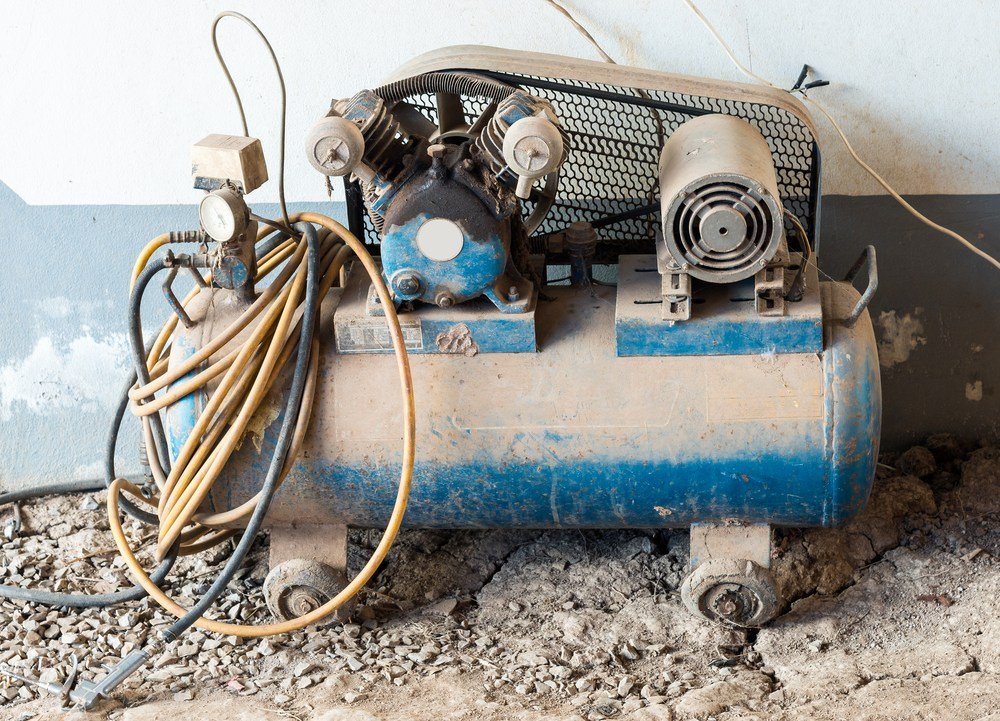
- Oil In The Air Lines. If the compressor pump starts pushing a lot of oil into the air lines, it could indicate that the internal piston rings are bad and are letting oil slip by. This also indicates that it is no longer building pressure well. If you have a regulator with a filter, check and see if it soaked in oil.
- Leaking At The Head. There is a large gasket at the head of the compressor. With age, these can fail, allowing air to leak around the head. Be careful when trying to check this as the head of the compressor is extremely hot.
- Intake Valve. We talked about this earlier, but make sure that the compressor can pull air in.
- Air Production. You can unscrew the compressor from the check valve and see if it is pushing a large air volume when it is running. While this isn’t very scientific, you should get an idea if the air produced is pretty weak.
- Bad Capacitor. This falls more under the “bad motor” category. A slow-to-start or struggling-to-start condition indicates a bad capacitor on the motor.
If the compressor is bad, you may be able to shop the model number online and just buy a replacement.
Grainger, Amazon, Ingersoll Rand, Dewalt, and Campbell Hausfeld all sell replacement universal compressors.
How Dangerous Is It If My Compressor Won’t Shut Off?
The biggest risk comes from the potential of a tank explosion.
Hopefully, the safety valve, the unloader valve or the compressor head will fail first.
If the compressor won’t shut off on its own, there is a risk of tank explosion.
Summary
The pressure switch is the main control of your compressor. It keeps the air compressor pressure within a specific PSI range by turning the motor on and off.
Simply put, you are dealing with one of these problems:
- Bad Pressure Switch
- Compressor Can’t Build Pressure Due To A Leak
Good luck figuring out which one it is.
 Skip to content
Skip to content

